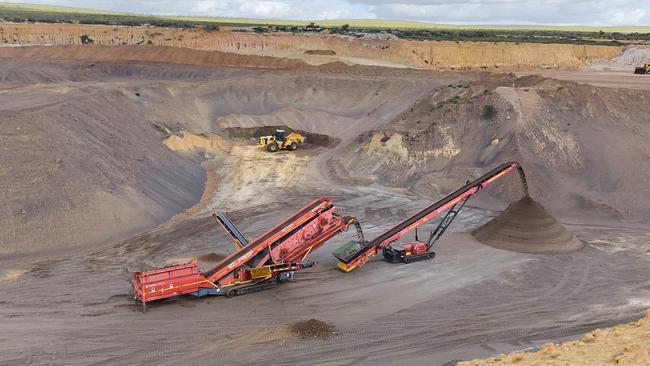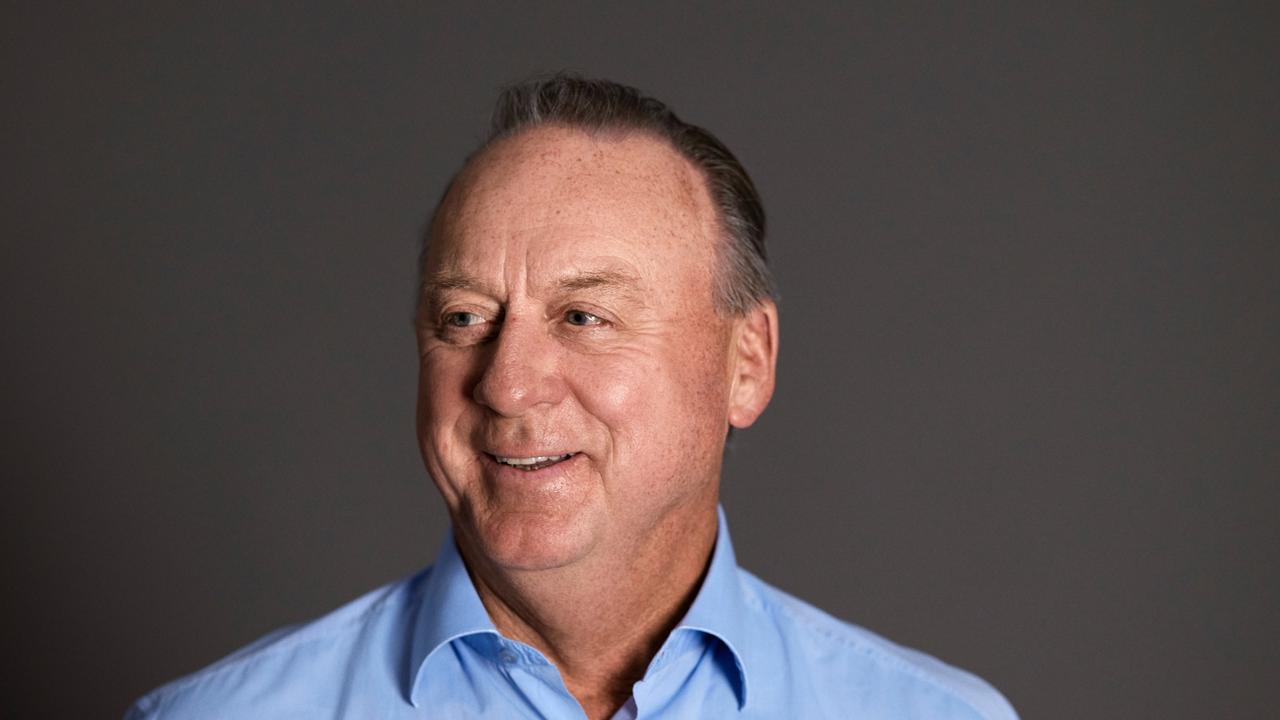Australia should develop a magnet industry, says Northern Minerals chair Nick Curtis
As the federal government hones its critical minerals strategy, mining veteran Nick Curtis has called for development of a local industry.

Business
Don't miss out on the headlines from Business. Followed categories will be added to My News.
Rare earths industry veteran Nick Curtis has urged the federal government to support the development of a magnet industry in Australia, to help create a rare earths supply chain independent from China.
The executive chairman of ASX-listed rare earths explorer Northern Minerals, who was instrumental in the development of rare earths company Lynas, said development of a magnet industry would be important in boosting the rare earths industry in Australia.
China has some 35 per cent of the world’s supply of rare earths but it dominates the processing sector and the production of rare earth magnets, which are critical for electric vehicles, wind turbines and defence equipment.
“China produces 95 per cent of the world’s magnets but Australia has the ingredients and the skills to build our own magnet industry,” Mr Curtis said in an interview with the Australian.
“If we could build our own magnet industry we can go downstream further.
“Magnets could be at the centre of industrial manufacturing clusters.”
Mr Curtis’s comments come as the federal government is looking at its strategy for the critical minerals industry.
In a speech to the Critical Minerals Summit organised by The Australian and PwC in November, federal Treasurer Jim Chalmers said there were dangers in “over-relying on a substantial supplier of a critical resource”.
He said federal Resources Minister Madeleine King was working on “refreshing” the government’s critical minerals strategy.
Mr Curtis has been watching the rare earths sector since working in the mining industry China in the 1990s.
He founded Chinese gold mining company Sino Gold, which listed on the ASX in 2001 and was later sold to Eldorado Mines.
Curtis went on to become involved with Lynas, including developing the processing plant in Malaysia for the rare earths it mines in Mount Weld in Western Australia.
He remained connected with the company until stepping down as chairman in 2014.
One of the only rare earths processors outside of China, Lynas now has a market capitalisation of $7.3bn.
The US government recently agreed to provide financial assistance for the company to build a rare earths separation plant in Texas, which is expected to come online in 2025.
Mr Curtis has watched as the Chinese have increased their control over the rare earths industry and as mining companies from around the world, including Australia and the US, have found it cheaper to export their rare earths to China for processing.
But rare earths have become more critical in a world which is decarbonising, moving to greater use of renewable energy and electric vehicles.

China has had a history of imposing quotas on exports of processed rare earths, leading to concerns that it could use rare earths as a political weapon in future.
The country drastically cut exports in 2010, with accusations that it unofficially banned exports to Japan in a diplomatic dispute with the country after the 2010 Senkaku boat collision. It dropped export quotas in 2015 after a World Trade Organisation ruling went against it.
However, as tensions have risen over the South China Sea, there have been concerns that the sector is vulnerable. Japanese investors have put funding into Lynas amid concerns about independence from Chinese supplies.
Mr Curtis returned to the rare earths sector in November 2021 when he became executive chairman of rare earth explorer Northern Minerals, stepping up to the role of executive chair in June this year. The company has a pilot plant in the Kimberleys but is not yet in production.
He said he was not objecting to Chinese investment in the mining industry in Australia.
“The mining industry in Australia has always been dependent on foreign capital and will always be dependent on foreign capital,” he said.
“We should be welcoming foreign capital, but it doesn’t mean we don’t control what happens.
“It doesn’t mean you stop Chinese investing in rare earths, but you be very careful how you do it and you try to build an alternative competitive capacity.”
He said that if the Western world wanted to build a supply chain independent of China, because of the strategic importance of the sector to the global push for decarbonisation, countries such as Australia needed to be more proactive in looking at ways to develop the industry along the value chain.
Mr Curtis said Australia had plenty of rare earths, with companies finding new potential developments, and was in a good position to develop its own supply chain with the right policies.
He said Australia needed to look at policies that led to more processing of rare earths locally rather than exporting them to China for processing. These processed minerals could be used for the magnet industry.

Mr Curtis welcomed the federal government’s $1.2bn support for Iluka Minerals to build a processing plant in Eneabba, north of Perth, through the government’s Critical Minerals Facility, set up in 2021 by the Morrison government.
The Albanese government’s first budget, in October this year, included $50m over four years to establish the Australian Critical Minerals Research and Development Hub. It also allocated another $50m for the Critical Minerals Development Program.
Mr Curtis said the rare earths industry was relatively small, a fraction the size of the iron ore business, but it had significant strategic importance.
“It’s an industry whose strategic importance is much greater than its economic role,” he said.
He said the global demand for magnets was expected to more than double by 2035, leading to a big increase in demand for the rare earths needed for their production. While the strategic importance was recognised by government, he said rare earths companies still needed to get funding for their mines.
Northern Minerals this year struck a $20m funding deal with Iluka to send rare earths – which it is planning to produce from its Wolverine deposit in Browns Range in the Kimberleys – to Iluka’s processing plant at Eneabba.
Northern Minerals’ deposits are rich in the heavy rare earths dysprosium and terbium.
The company claims the deposit has the highest grade of the two rare earths in Australia.
At the moment, almost all the global supply of these minerals is produced in China.
Mr Curtis said the rare earths industry had been discussing China’s role in the sector for decades. But the debate had become more important in recent times as countries became concerned about their dependence on the processing market in China for critical minerals.
Mr Curtis said he did not think there would be room for another big processing plant in Australia apart from the refinery being built by Iluka and the cracking plant being built in Western Australia by Lynas.
“We’ve got Lynas and we’ve got Iluka,” he said. “That’s good, healthy competition.”
But he said the next step was to think about how to build more of the downstream industry in Australia, including the local manufacture of magnets.
Mr Curtis said Australia had good talent in universities and other technical groups, which could work on the development of a local magnet industry.
He said there was now a lot more interest being paid to the rare earths sector in Australia, with more money being put into exploration.
“People are getting excited about it and Australia is doing what it does: the sector that understands mineral exploration is starting to find more rare earths.
“But not everything’s going to get funded,” he said.
He said rare earth miners needed to have marketing deals with buyers to fund their operations.
“Unless you have the clarity of a strong marketing arrangement, it is hard to get financing for a project,” he said.
More Coverage
Originally published as Australia should develop a magnet industry, says Northern Minerals chair Nick Curtis




